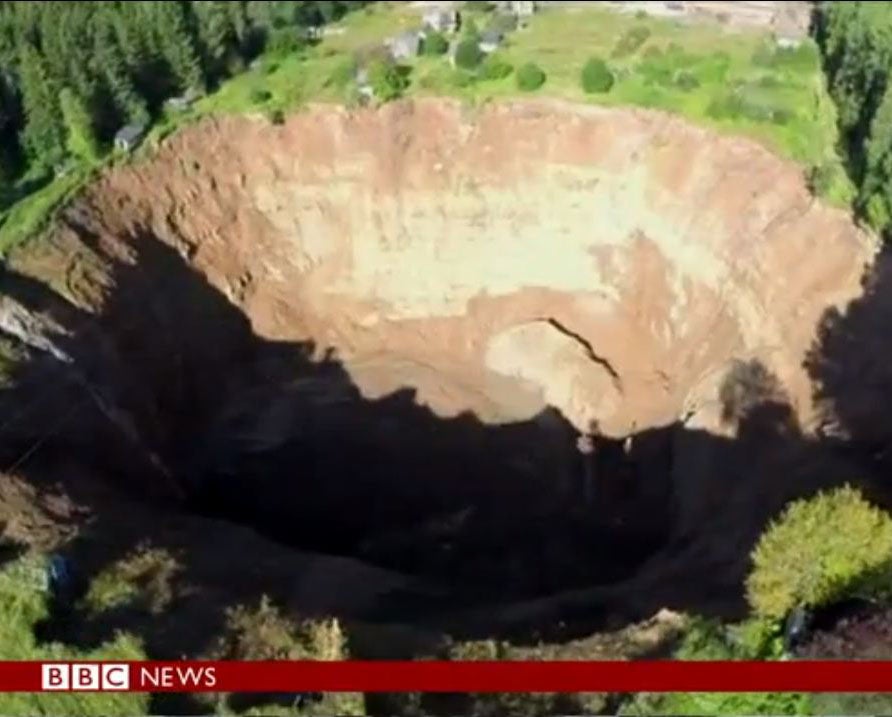Crater in Russia triples in size in ten months to become 120m wide sinkhole
The hole has already swallowed up 20 homes and threatens many more

Your support helps us to tell the story
From reproductive rights to climate change to Big Tech, The Independent is on the ground when the story is developing. Whether it's investigating the financials of Elon Musk's pro-Trump PAC or producing our latest documentary, 'The A Word', which shines a light on the American women fighting for reproductive rights, we know how important it is to parse out the facts from the messaging.
At such a critical moment in US history, we need reporters on the ground. Your donation allows us to keep sending journalists to speak to both sides of the story.
The Independent is trusted by Americans across the entire political spectrum. And unlike many other quality news outlets, we choose not to lock Americans out of our reporting and analysis with paywalls. We believe quality journalism should be available to everyone, paid for by those who can afford it.
Your support makes all the difference.A crater which has swallowed up to 20 homes in Russia has tripled in size in the space of ten months to become a 120m-wide sinkhole.
The crater first appeared after the collapse of a former potash mine close to Solikamsk in the Ural Mountains at the end of 2014.
According to the BBC, officials believe the crater was caused by flood erosion in the underground mine.
It is now a staggering 76m deep and 120m wide and has swallowed up to 20 Russian weekend cottages.
The latest images taken by helicopters shows that earlier reassurance from an expert inspecting the site in April that the hole was “more or less stable” was incorrect, the Siberian Times reports.
The images show the nearby homes are now at risk of collapsing into the hole but local officials have said that no one is in physical danger.
The mine, which was owned by Uralkali, the world’s largest potash producer, was closed in November last year when the sinkhole first appeared 3.5km east of the mine and over 1,300 workers at the site where successfully evacuated, Reuters reported at the time.
In a company publication seen by the Siberian Times, Uralkali said it was doing all it could to contain the damage.
It said: “Uralkali continues to eliminate the accident consequences and to minimize potential adverse effects.
“The company continues pumping brines, working to strengthen the bridges between the mining fields Solikamsk-1 and Solikamsk-2, as well as plugging water carrying channels.
“As of August 24, 2015 the dimensions of the hole at the level of the earth's surface is 122 to 125 metres.”
Join our commenting forum
Join thought-provoking conversations, follow other Independent readers and see their replies
Comments